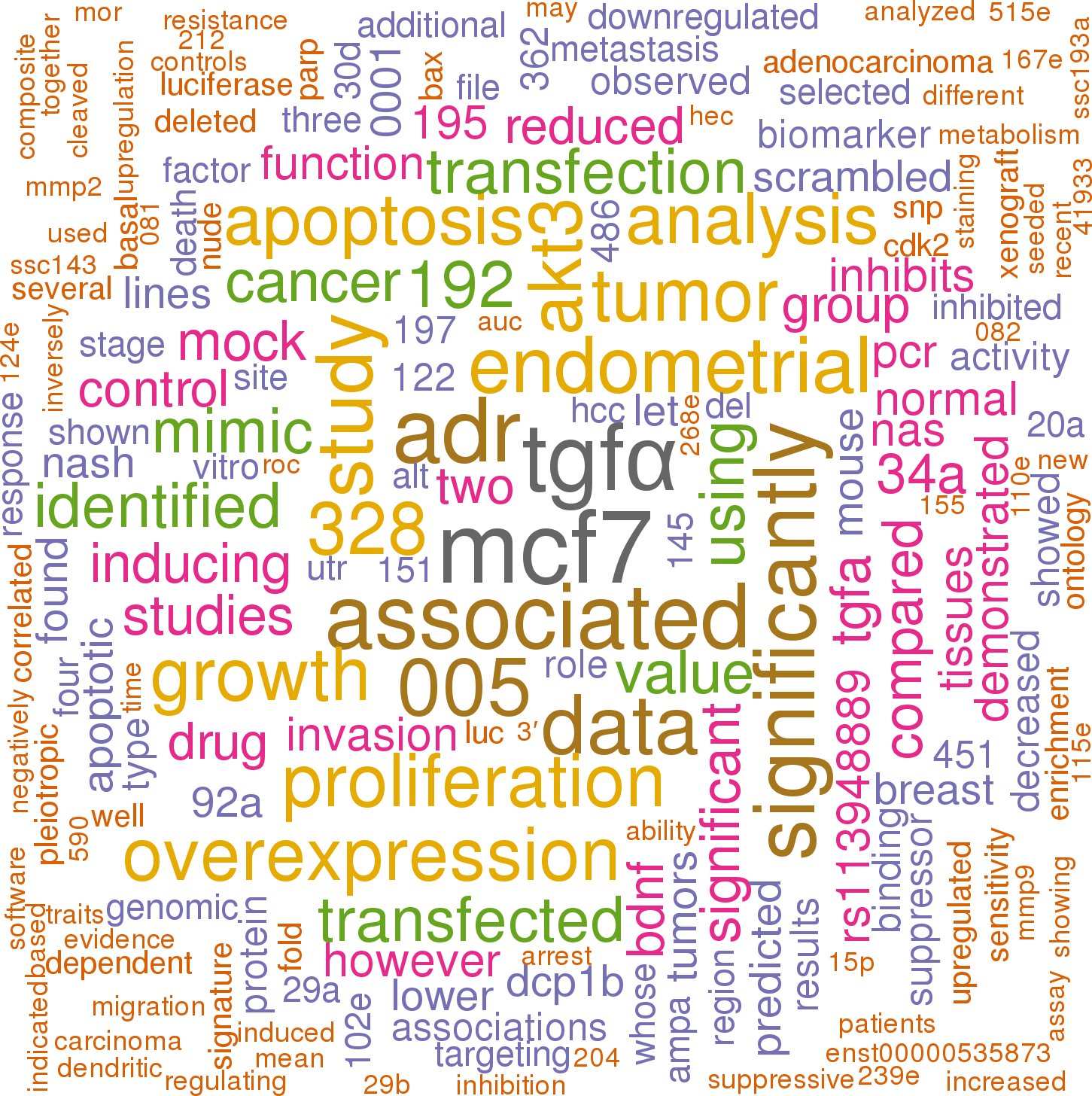Accession
MI0003190
Symbol
HGNC:
MIR505
Description
Homo sapiens
hsa-mir-505 precursor miRNA
Gene family
MIPF0000217;
mir-505
Summary
Caution, this is an AI generated summary based on literature. This may have errors. ?
MIR505 is a microRNA that has been studied in various contexts. It has been used in the 2−ΔΔCT method to normalize gene expression [PMC6352865]. MIR505 is particularly amenable to detection in human fluids [PMC6281605]. In the context of Parkinson's disease (PD), MIR505 has been found to be down-regulated in cerebrospinal fluid (CSF) and brain tissue of PD patients [PMC6115491]. It has also been implicated in ovarian aging, as its expression was induced in both mice and humans [PMC9918015]. MIR505 is involved in various biological processes, such as neural tube formation and cell growth, by targeting genes like fibroblast growth factor 18 (FGF18) and mitogen-activated protein kinase kinase kinase 3 (MAP3K3) [PMC7040864]. Altered expression of MIR505 may be associated with spina bifida and neural tube defects [PMC7040864]. Additionally, MIR505 has been found to be up-regulated along with other miRNAs like miR199a/b and miR320, leading to decreased sensitivity to cisplatin and OXA through modulation of the Wnt/β-catenin pathway [PMC9331520]. The location of MIR505 is upstream of the gene that encodes the ATP11C protein [PMC4561498]. In wheat, MIR505 is one of the miRNAs that could not be detected using Northern blot analysis but was validated by semi-quantitative RT-PCR [PMC2394755].
Literature search

33 open access papers mention hsa-mir-505
(194 sentences)
(194 sentences)
Sequence
22821
reads,
422
reads per million, 156 experiments
gaugcacccaguggGGGAGCCAGGAAGUAUUGAUGUuucugccaguuuagCGUCAACACUUGCUGGUUUCCUcucuggagcauc
(((((..((((.(((((((((((.((((.((((((((...........)))))))).)))).))))))))))).)))).)))))
(((((..((((.(((((((((((.((((.((((((((...........)))))))).)))).))))))))))).)))).)))))
Structure
ac u G A ucug
gaugc ccag ggGGGAGCCAG AAGU UUGAUGUu c
||||| |||| ||||||||||| |||| |||||||| c
cuacg gguc cUCCUUUGGUC UUCA AACUGCga a
-a u G C uuug
Annotation confidence
Not enough data
Do you think this miRNA is real?
Comments
The mature sequence shown here represents the most commonly cloned form from large-scale cloning studies [2]. The 5' end of the miRNA may be offset with respect to previous annotations.
Genome context
chrX: 139924148-139924231 [-]
Disease association
hsa-mir-505 is associated with one or more human diseases in the Human microRNA Disease Database
| Disease | Description | Category | PubMed ID |
|---|
Mature hsa-miR-505-5p
| Accession | MIMAT0004776 |
| Description | Homo sapiens hsa-miR-505-5p mature miRNA |
| Sequence | 15 - GGGAGCCAGGAAGUAUUGAUGU - 36 |
| Evidence |
experimental
cloned [2] |
| Database links |



|
| Predicted targets |



|
Mature hsa-miR-505-3p
| Accession | MIMAT0002876 |
| Description | Homo sapiens hsa-miR-505-3p mature miRNA |
| Sequence | 51 - CGUCAACACUUGCUGGUUUCCU - 72 |
| Evidence |
experimental
array-cloned [1], cloned [2-3] |
| Database links |



|
| Predicted targets |



|
References
|



